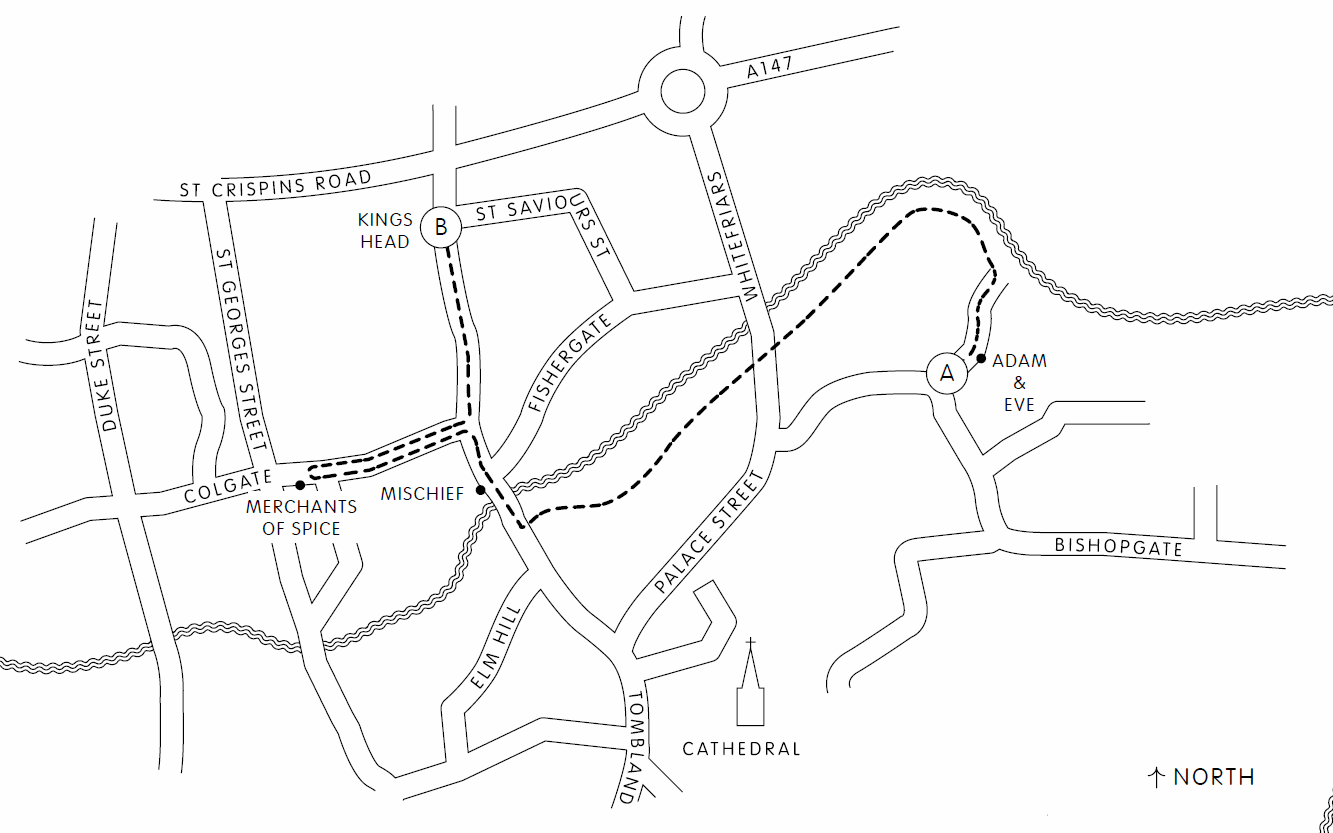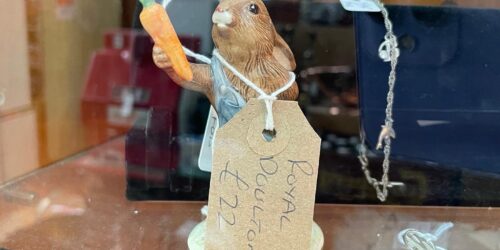
As part of the Walking Norwich series, writer and teacher James Benedict Brown has written a pub trail around Norwich.
When I first moved to Norwich to teach architecture at the arts university, I was often told that the city has a church for every Sunday and a pub for every day. In fact, at one point there were many more: when the Gospel Temperance Union surveyed the city in 1892, they found 631 pubs and more than two dozen breweries. Despite my best efforts, I still haven’t quite got around to them all, but like most locals have decided on a few firm favourites. I want to encourage visitors to enjoy an afternoon walk and sample one or two.
The architecture critic Ian Nairn spent two years living in Norwich, just as his career as a writer was about to take off. Nairn’s preferred seat was “in the corner, and unless it was his local, he ensured that he sat alone. The pub … was a place to shake off loneliness without being in anyone’s company.”1 It was probably in the pubs of Norwich that the solitary Nairn first drafted his searing critiques of the city’s post-war redevelopment, which by 1967 was contributing to a “steady, complacent slide down to vacuity.”2

Thanks to the recent digitisation of his notes he has left us an incredible social history of Norwich, fleshed out with colourful observations of patrons and landlords alike. Many visitors to Norwich seek out the Adam & Eve on Bishopgate – widely agreed to be Norwich’s oldest surviving pub, first referred to in 1249. Plummer found it in 1977 “a really quaint inn with low beams, nooks and crannies… the local customers were arty crafty types, not money spenders. The barman or landlord was very much in the same vein.”
Following the River Wensum and to Fye Bridge Street, the Mischief Tavern is still as lively as it was found more than forty years ago: “lots of fine flavour… during the week there is a vodka drinking night.”
Many of the pubs visited by Plummer, Galley and Stubs have closed or changed their use. The Black Boys at 30-32 Colegate is described in sensuous detail, with “black leather jacketed Hell’s Angel types, roars of motor bikes and Castrol R aftershave;” today it is home to much more alluring aromas, as the Merchants of Spice, an Indian restaurant.
Walking north along Magdalen Street, within a stone’s throw of where an elevated inner ring road punched through the medieval street (no doubt to the chagrin of Ian Nairn) we find the King’s Head. In 1977, Plummer wrote that “this pub is too small ever to develop to anything, it is typical of many that used to exist in this area.” Today, with a dozen real ales on tap and a strict no-keg policy, it has become one of the city’s most notable pubs for the beer tourist, and multiple winner of CAMRA Pub of the Year in Norfolk.
Norwich is a city that celebrates its culture of beer, not just in its pubs, but also its annual beer festival every October. From Joyce’s Dublin to Bukowski’s Los Angeles, the pub offers a rich seam of raw material that nurtures the literary imagination. We enter a world of stories, inspiration and oddball characters; a place where literary paths cross and stories are told, re-told and told. For the literary visitor to the Fine City, an hour or two exploring its hostelries will provide the writer with space to think, to shake off loneliness, and to tell new stories, likely amongst “lots of chatter and the clink of glasses and all the friendship of a tavern.” (Boundary, Aylsham Road, 26 February 1978)
- Darley, G., & McKie, D. (2013). Ian Nairn: words in place. Nottingham: Five Leaves Publications.
- Nairn, I., & Hatherley, O. (2013). Nairn’s Towns. London: Notting Hill Editions.
- Norfolk and Norwich Gospel Temperance Union (1892). Drink Map of Norwich. Held in the archives of Picture Norfolk. URL: https://norfolk.spydus.co.uk/cgi-bin/spydus.exe/ENQ/PICNOR/BIBENQ?BRN=1135527
James Benedict Brown is writer and teacher about architecture. He was the first Lecturer in Architecture at Norwich University of the Arts (2012-14) and is the current Course Leader of the BA Architecture degree.
You may also like...
Explore five accessible walks in Norwich with Lou Tondeur
Louise Tondeur shares five accessible walks through Norwich

26th October 2022
Read ‘St. Gregory’s’ by journalist Soobin Kim
‘The delight of the utterly useless’

6th September 2022
Read ‘Norwich by the Book(shop)’ by Peggy Hughes
‘You might lose yourself among these shelves but you’ll rediscover your childhood here.’

17th May 2019






